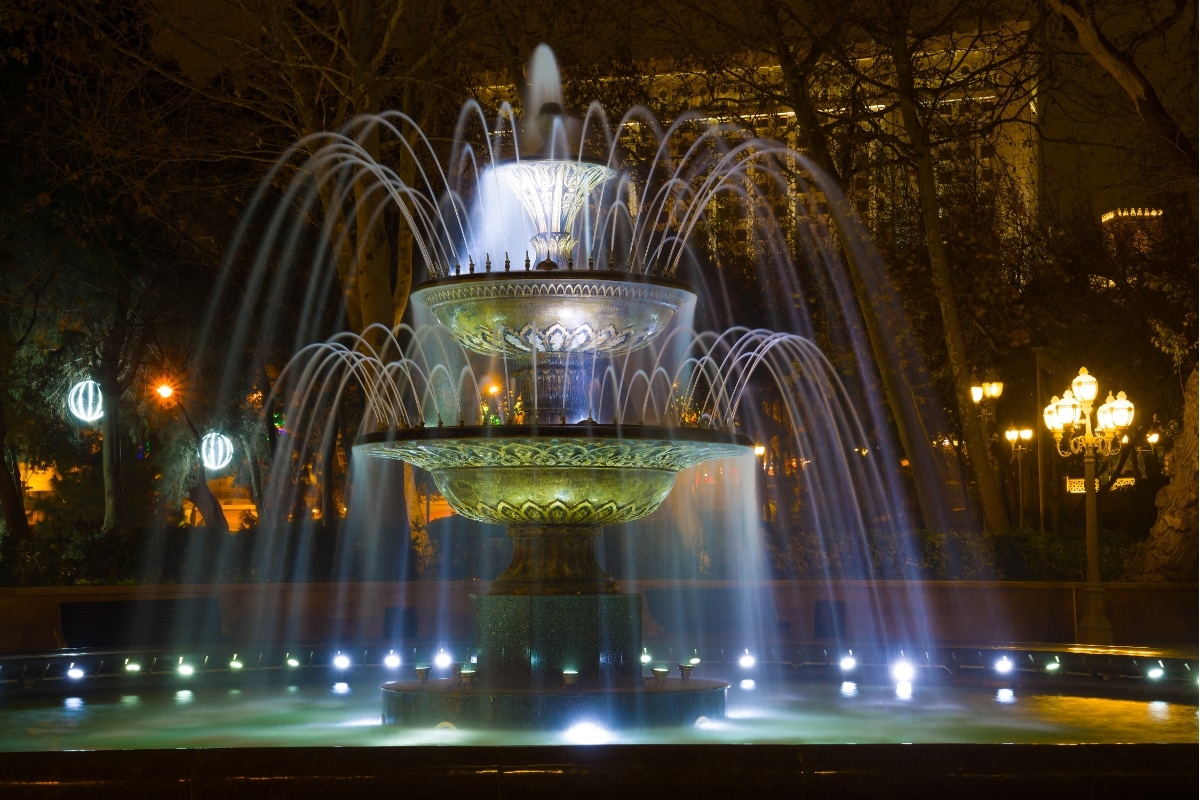Call Us TODAY: (417) 771-7552
Water Features And Sustainability: Eco-Friendly Commercial Fountains Options

Incorporating water features like fountains into commercial spaces offers a visually appealing and calming environment. However, as sustainability becomes increasingly important, many businesses are seeking eco-friendly options. Eco-friendly commercial fountains not only enhance aesthetics but also align with environmental goals. By choosing sustainable solutions, you can enjoy the beauty of a fountain while minimizing its impact on the environment. Let’s explore various eco-friendly fountain options and their benefits.
The Benefits of Eco-Friendly Fountains
Reducing Water Waste:
- Efficient Water Use: Modern eco-friendly fountains are designed to use water efficiently. Unlike traditional fountains that may waste large amounts of water, these systems incorporate features to minimize evaporation and runoff.
- Water Recycling: Many eco-friendly fountains utilize water recycling systems. This means that water is continuously recirculated through the fountain, reducing the need for constant refilling and conserving water resources.
Lower Energy Consumption:
- Solar-Powered Options: Solar-powered fountains are a popular choice for eco-conscious businesses. They use energy from the sun to operate, which significantly reduces electricity consumption and lowers energy bills.
- Energy-Efficient Pumps: For fountains that rely on traditional power sources, energy-efficient pumps are available. These pumps use less electricity while maintaining optimal performance, helping to lower your overall energy use.
Reduced Environmental Impact:
- Sustainable Materials: Many eco-friendly fountains are made from sustainable or recycled materials. For example, some use recycled glass or metal, reducing the demand for new resources and minimizing waste.
- Low Maintenance: Eco-friendly fountains often require less maintenance due to their efficient design. This means fewer chemicals and cleaning products are needed, which benefits both the environment and your maintenance budget.
Types of Eco-Friendly Fountains
Solar-Powered Fountains
Solar-powered fountains are a leading choice for those seeking an environmentally friendly option. These fountains use solar panels to convert sunlight into electricity, powering the fountain’s pump and lights. Benefits include:
- Cost Savings: Reduced electricity costs as the fountain operates solely on solar energy.
- Easy Installation: Solar-powered fountains typically have straightforward installation processes, with no need for extensive electrical work.
- Maintenance-Free: Minimal maintenance is required, as there are no electrical components that need regular checking.
Recirculating Fountains
Recirculating fountains are designed to continuously reuse the same water rather than letting it flow out and be wasted. Key features include:
- Water Conservation: Reduces water usage by circulating the same water through the system.
- Reduced Evaporation: By containing the water within a closed system, recirculating fountains reduce evaporation rates, which is especially beneficial in hot climates.
- Less Frequent Refilling: With a closed-loop system, refilling the fountain becomes less frequent, which conserves both water and time.
Rainwater Harvesting Fountains
Rainwater harvesting fountains collect and utilize rainwater for their operation. This approach offers several benefits:
- Sustainable Water Source: Uses natural precipitation, reducing reliance on municipal water supplies.
- Cost Efficiency: Lower operational costs since the fountain uses free, natural rainwater.
- Environmental Benefit: Helps in reducing stormwater runoff and alleviates pressure on local water systems.
Choosing the Right Eco-Friendly Fountain
When selecting an eco-friendly commercial fountain, consider the following factors to ensure it meets your sustainability goals:
- Size and Scale: Choose a fountain that fits the scale of your commercial space. Larger fountains may require more water and energy, so balance size with efficiency.
- Design and Material: Opt for designs and materials that reflect your brand’s commitment to sustainability. Look for fountains made from recycled or sustainable materials.
- Budget: Consider both the initial investment and long-term savings. While eco-friendly fountains might have a higher upfront cost, they often offer savings on energy and water over time.
The Installation Process for Eco-Friendly Fountains
Planning and Design:
- Site Assessment: Evaluate the location where the fountain will be installed. Ensure it receives adequate sunlight if opting for a solar-powered fountain and check for appropriate drainage.
- Design Considerations: Work with a designer to choose a fountain that aligns with your commercial space’s aesthetic and functional needs. Ensure the design incorporates sustainable features.
Installation:
- Preparation: Prepare the site by leveling the ground and setting up any necessary supports or foundations.
- Fountain Assembly: Assemble the fountain according to the manufacturer’s instructions. This may include setting up solar panels, pumps, and other components.
- Testing and Adjustment: Test the fountain to ensure it operates correctly. Make any necessary adjustments to optimize water flow and energy use.
Ongoing Maintenance:
- Regular Checks: Perform regular maintenance to ensure the fountain continues to operate efficiently. This includes checking the water levels, cleaning filters, and inspecting solar panels or pumps.
- Seasonal Care: Prepare the fountain for seasonal changes, such as winterizing it in cold climates to prevent freezing.
Eco-Friendly Fountains
By opting for solar-powered, recirculating, or rainwater-harvesting fountains, you contribute to water conservation and energy efficiency. Investing in these sustainable solutions benefits both the environment and your business.
For those looking to make an impactful and responsible choice, an eco-friendly commercial fountain in Springfield offers a great solution. They help maintain an attractive and functional water feature while minimizing environmental impact.
Frequently Asked Questions
Can rainwater harvesting fountains be installed in any location?
Rainwater harvesting fountains can be installed in most locations, but their effectiveness depends on local rainfall patterns. These fountains collect and use rainwater, so they are most beneficial in areas with regular precipitation. They also require proper installation to ensure that the collected rainwater is effectively channeled and used.
Are eco-friendly fountains more expensive than traditional ones?
Eco-friendly fountains may have a higher upfront cost due to the technology and materials used. However, they often lead to long-term savings through reduced water and energy costs. Over time, the operational savings can offset the initial investment, making them a cost-effective choice in the long run.
How do eco-friendly commercial fountains save water?
Eco-friendly commercial fountains are designed with advanced technologies to minimize water waste. They often incorporate features such as recirculating water systems, which allow the water to be reused rather than constantly replenished. These systems reduce the amount of water that needs to be added and help conserve precious resources. Additionally, many eco-friendly fountains use low-flow pumps and water-saving nozzles to control the flow rate and reduce evaporation. By optimizing the water flow and recycling it, these fountains contribute significantly to water conservation efforts.




